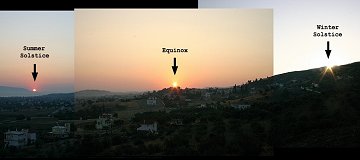 Auroras for Christmas? It could happen... Sign up for SpaceWeather PHONE.
Auroras for Christmas? It could happen... Sign up for SpaceWeather PHONE.
SOLAR WIND: A solar wind stream is blowing past Earth and it could spark a geomagnetic storm at high latitudes. Sky watchers in Scandinavia, Alaska and Canada should be alert for auroras.
BLOSSOMING SUNSPOT: Sunspots can burst onto the scene with surprising rapidity--for example, sunspot 837. Two days ago it was a speck, now it's as wide as two planet Earths:

Sunspot 837: Dec. 18-19, 2005. Credit SOHO.
Sometimes, the magnetic fields of fast-growing sunspots become unstable and explode. The magnetic field of sunspot 837, however, does not appear to harbor energy for strong flares. Solar activity should remain low.
WINTER SOLSTICE: Northern winter begins Wednesday, Dec. 21st, at precisely 1835 UT (10:35 am PST) when the sun reaches its southernmost declination of the year: minus 23.5o. Get ready for a long night, e.g., 14 hours of darkness in southern California and more than 18 hours in Alaska.
The highest and lowest points in the sky reached by the sun throughout the year are called solstices, and there is a big difference between the summer solstice and its winter counterpart. In Athens, Greece, Anthony Ayiomamitis photographed the sunrise "during summer and winter solstice as well as the intervening equinox."

"[Here in Athens], the azimuth of the rising sun varies by a whopping 66 degrees from one solstice to the other," he marvels.
Meanwhile in the southern hemisphere, Wednesday marks the beginning of summer: long days, short nights, and plenty of sunshine. Earth's seasons are opposite on the two ends of our planet.
No matter where you live, Happy Solstice!

